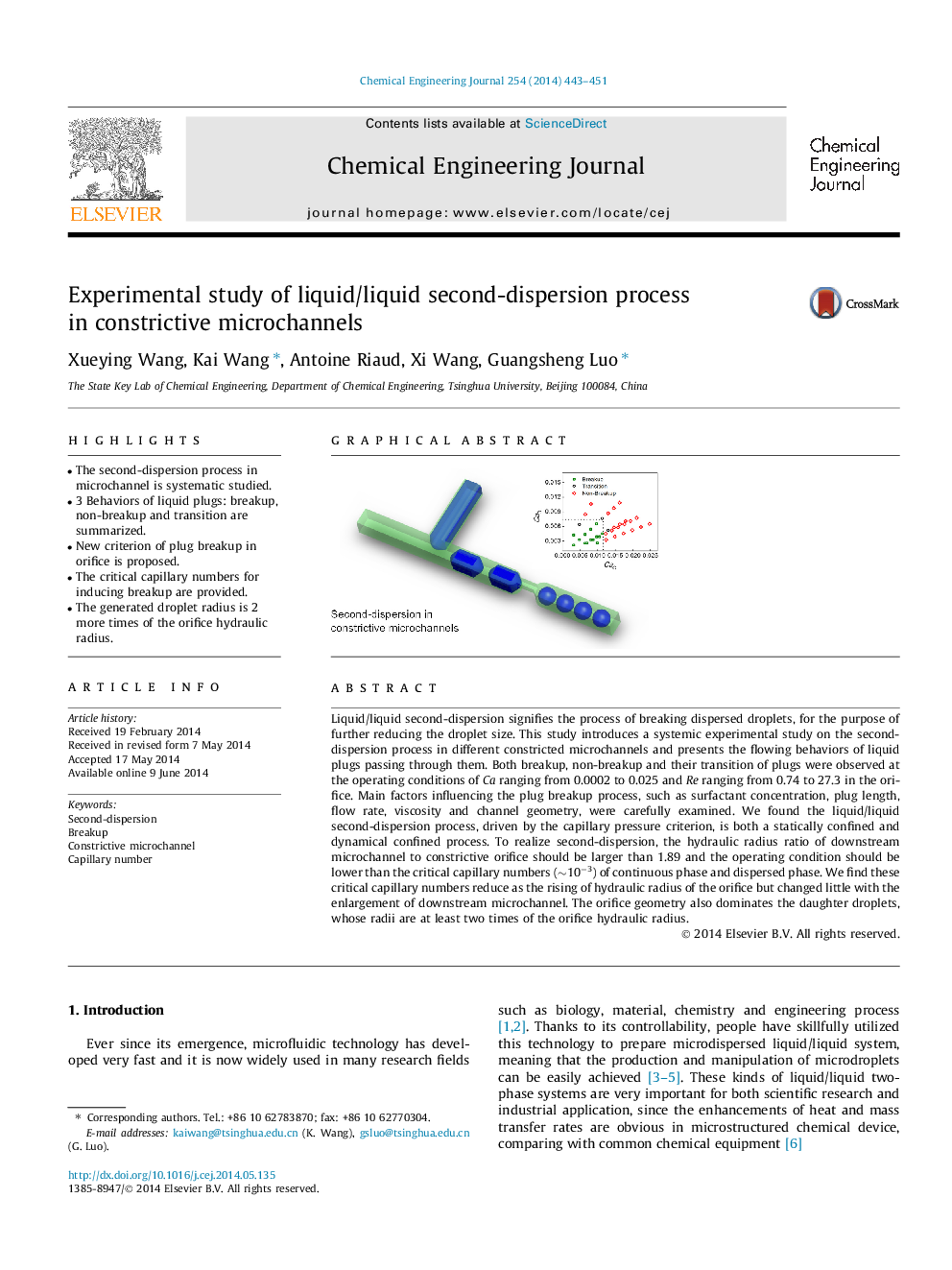| Article ID | Journal | Published Year | Pages | File Type |
|---|---|---|---|---|
| 147296 | Chemical Engineering Journal | 2014 | 9 Pages |
•The second-dispersion process in microchannel is systematic studied.•3 Behaviors of liquid plugs: breakup, non-breakup and transition are summarized.•New criterion of plug breakup in orifice is proposed.•The critical capillary numbers for inducing breakup are provided.•The generated droplet radius is 2 more times of the orifice hydraulic radius.
Liquid/liquid second-dispersion signifies the process of breaking dispersed droplets, for the purpose of further reducing the droplet size. This study introduces a systemic experimental study on the second-dispersion process in different constricted microchannels and presents the flowing behaviors of liquid plugs passing through them. Both breakup, non-breakup and their transition of plugs were observed at the operating conditions of Ca ranging from 0.0002 to 0.025 and Re ranging from 0.74 to 27.3 in the orifice. Main factors influencing the plug breakup process, such as surfactant concentration, plug length, flow rate, viscosity and channel geometry, were carefully examined. We found the liquid/liquid second-dispersion process, driven by the capillary pressure criterion, is both a statically confined and dynamical confined process. To realize second-dispersion, the hydraulic radius ratio of downstream microchannel to constrictive orifice should be larger than 1.89 and the operating condition should be lower than the critical capillary numbers (∼10−3) of continuous phase and dispersed phase. We find these critical capillary numbers reduce as the rising of hydraulic radius of the orifice but changed little with the enlargement of downstream microchannel. The orifice geometry also dominates the daughter droplets, whose radii are at least two times of the orifice hydraulic radius.
Graphical abstractFigure optionsDownload full-size imageDownload as PowerPoint slide
